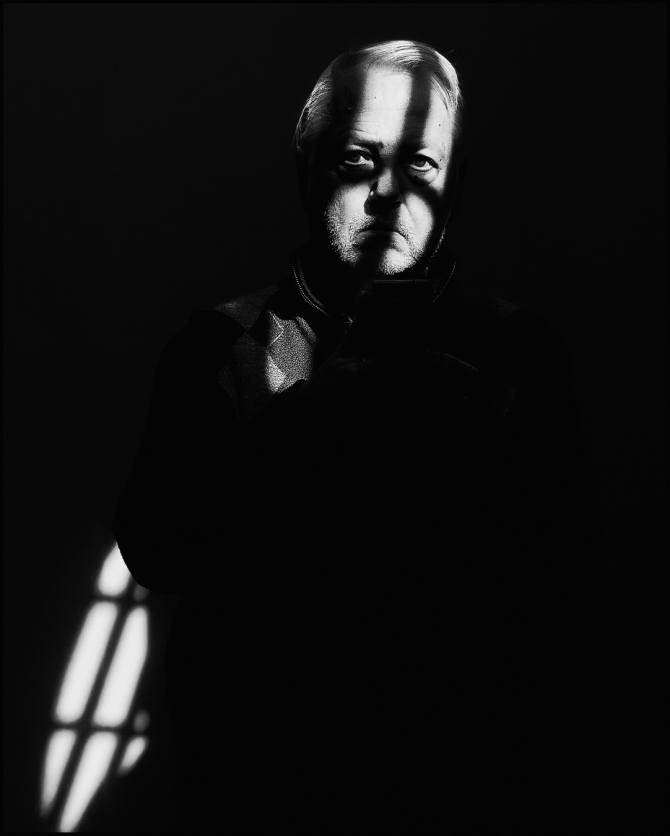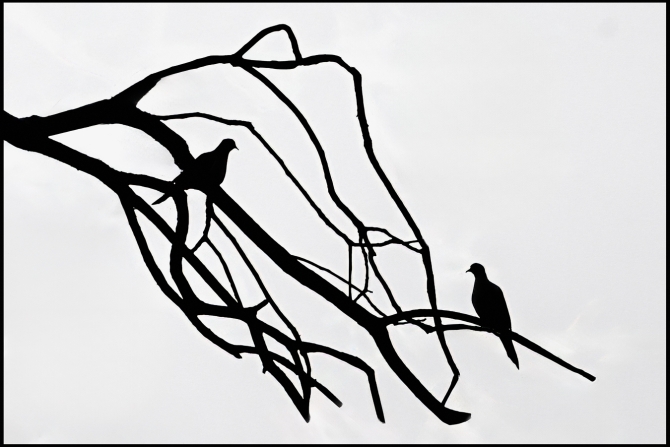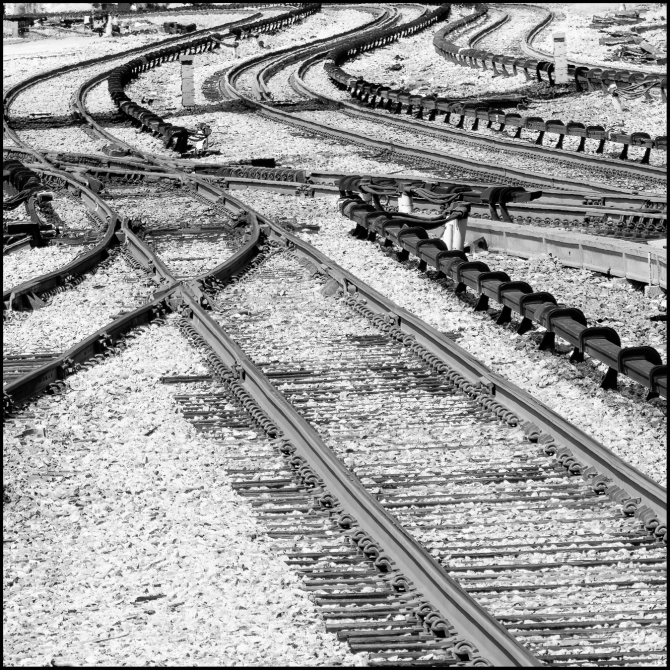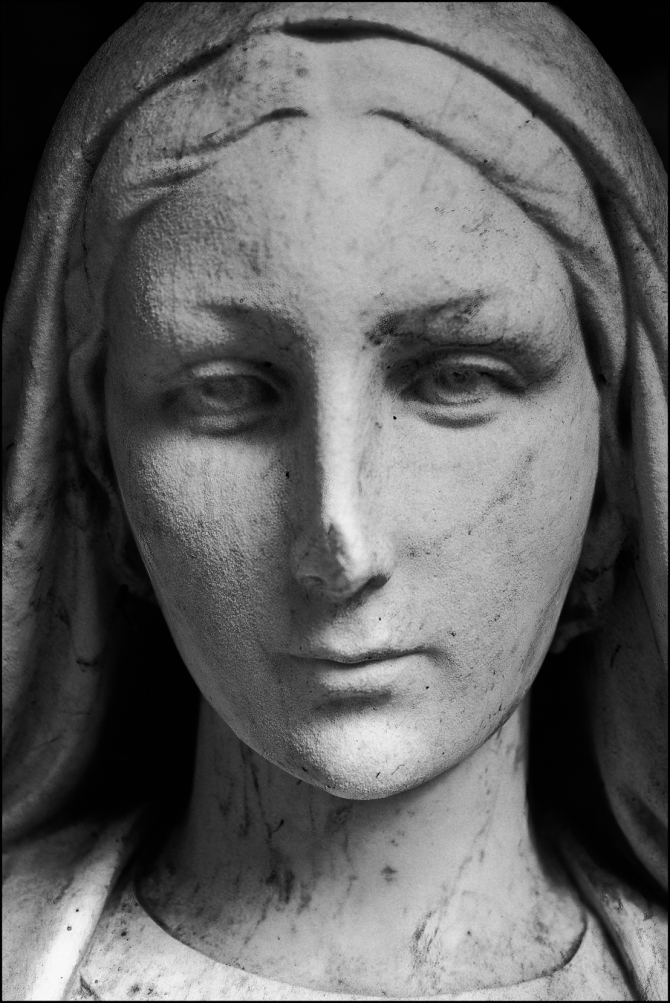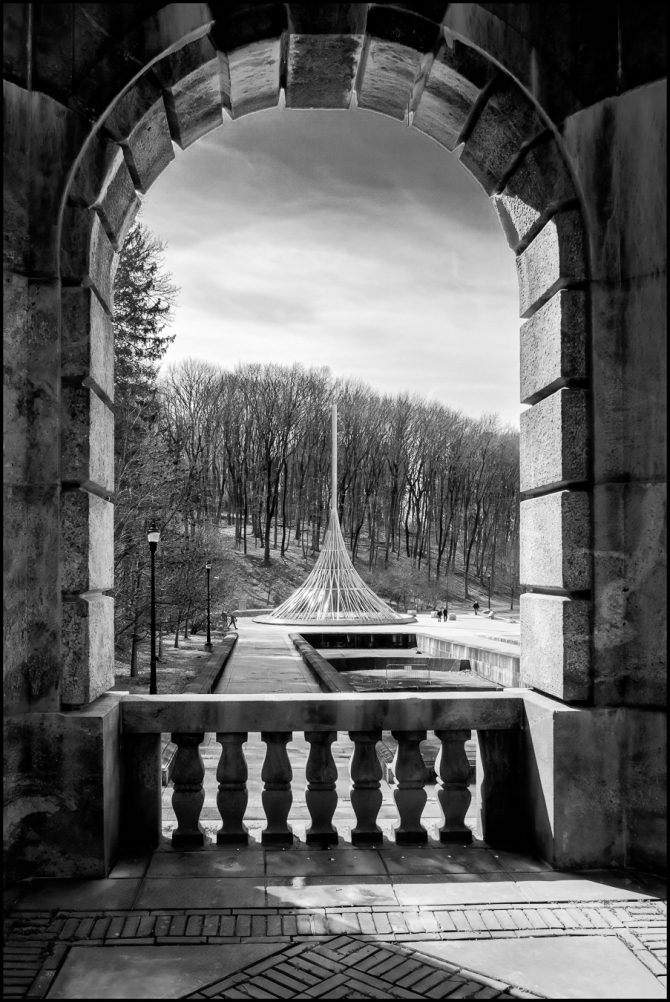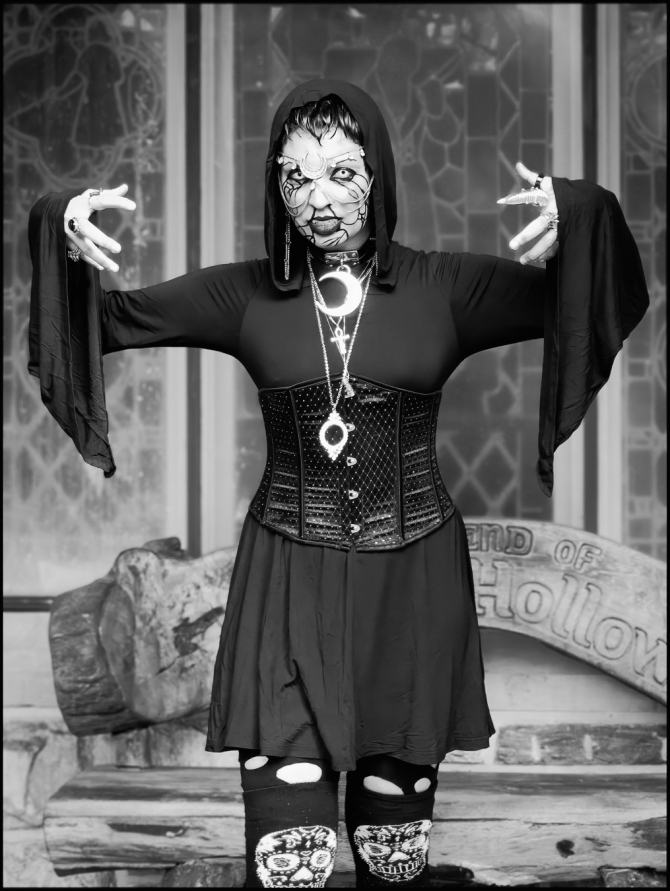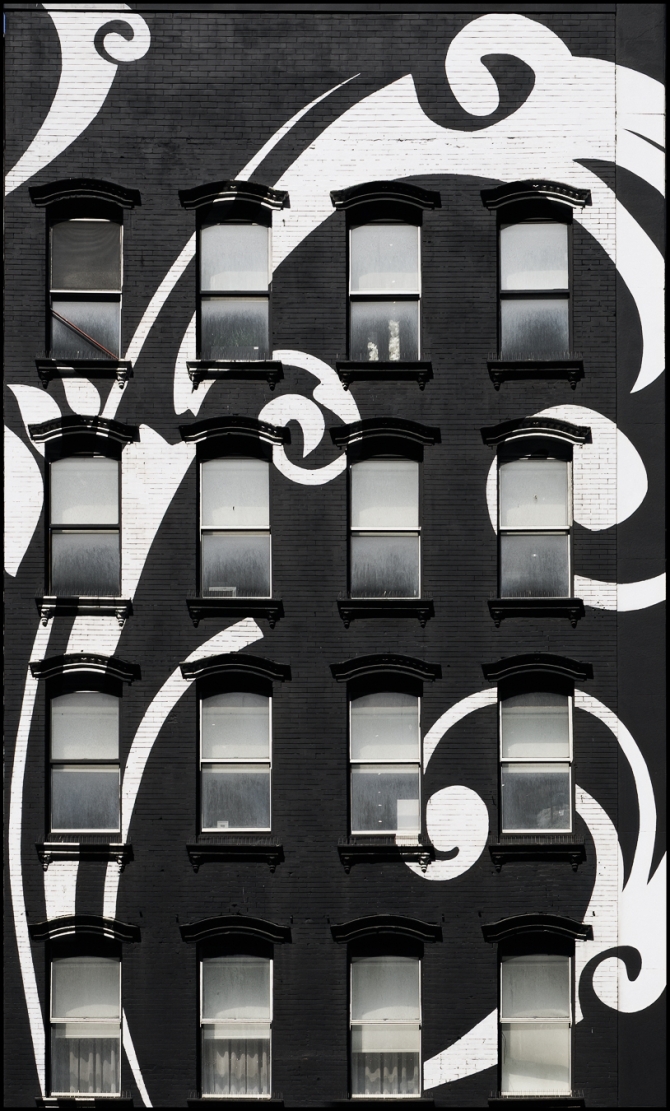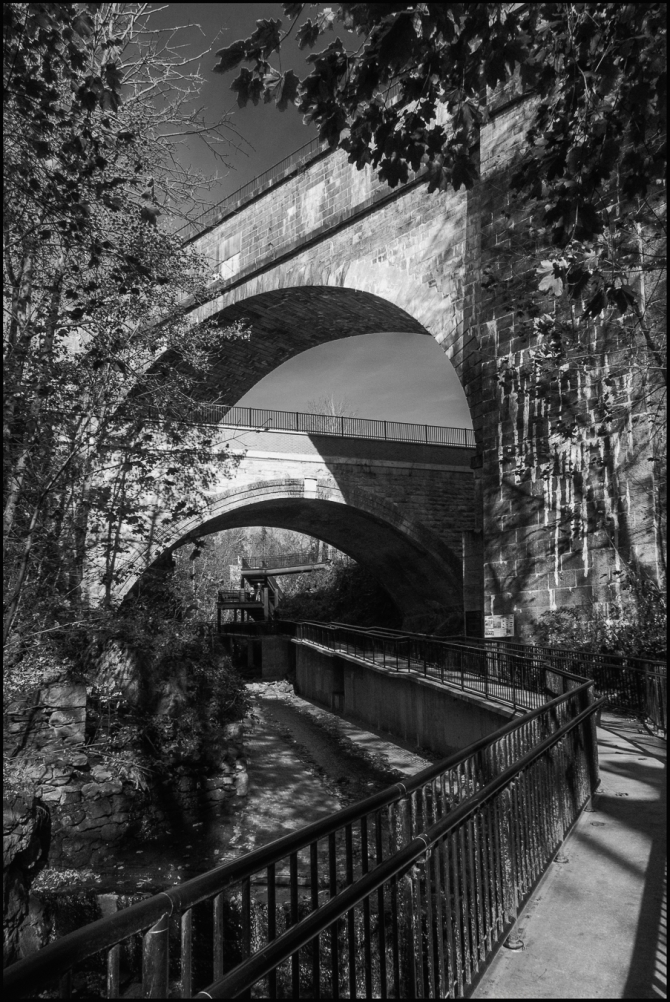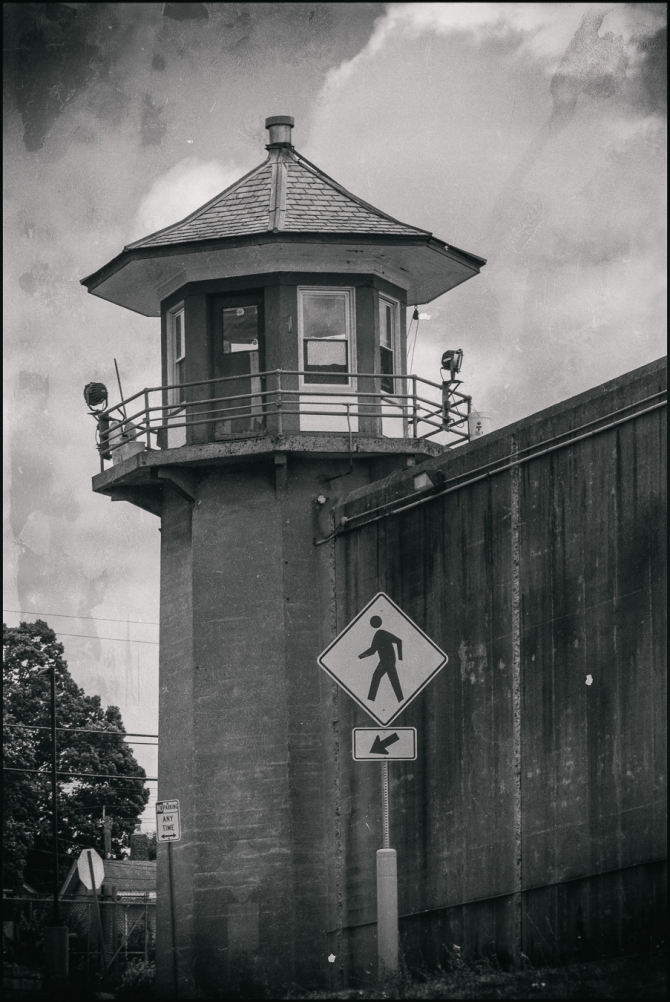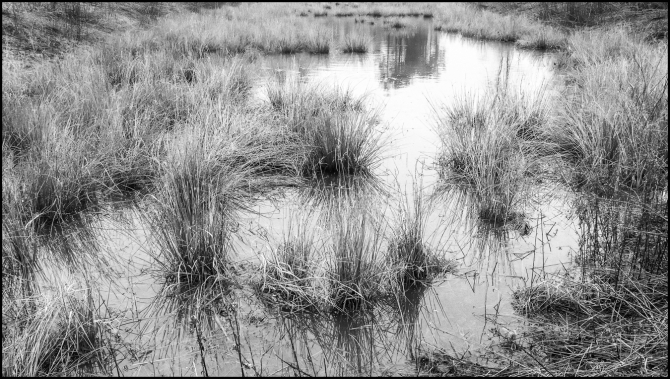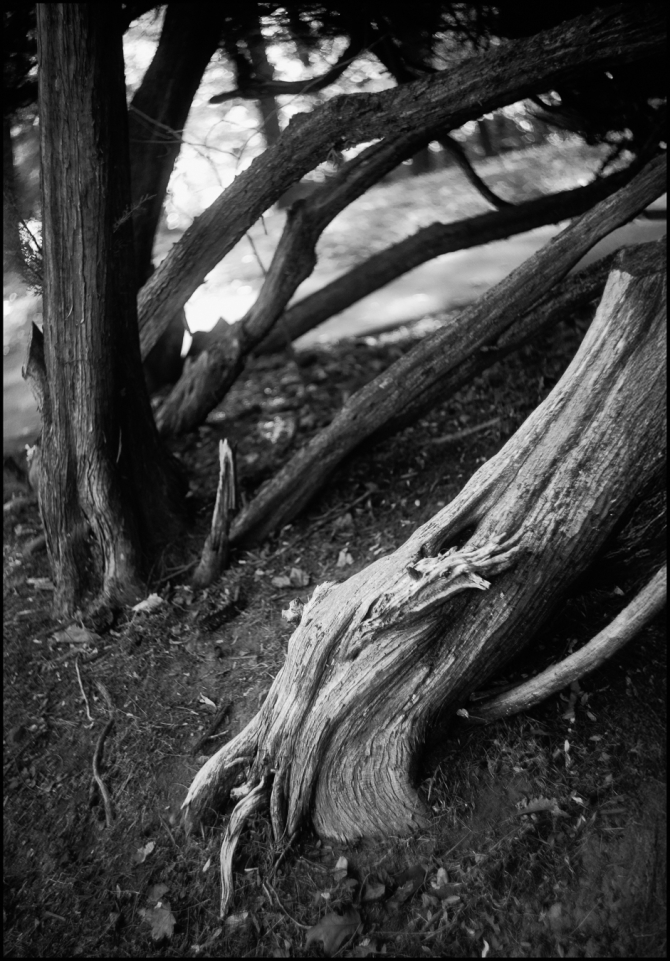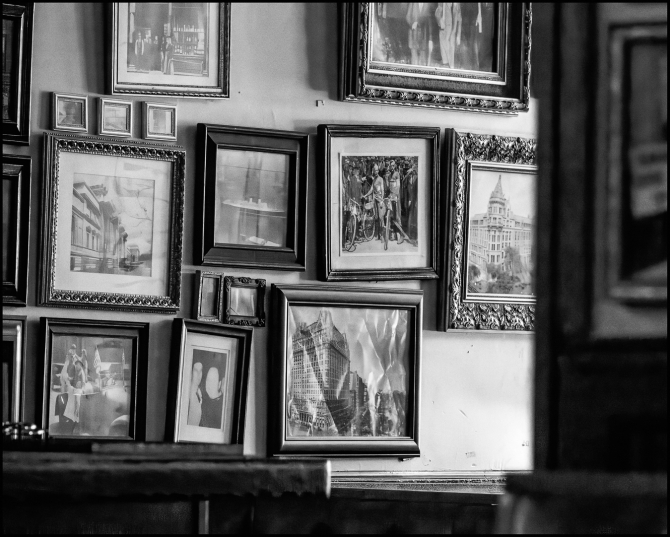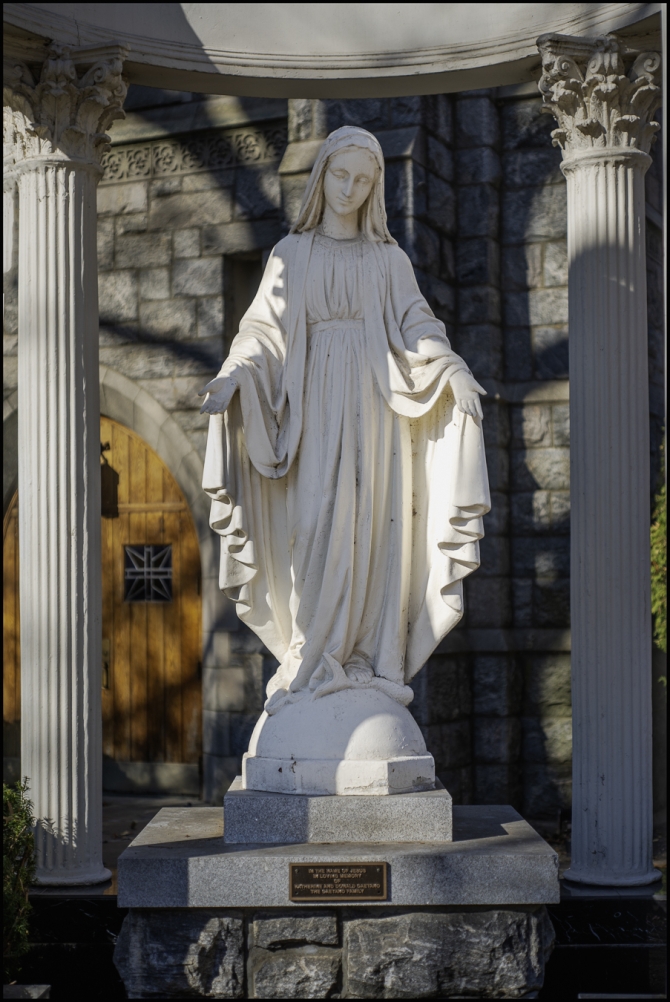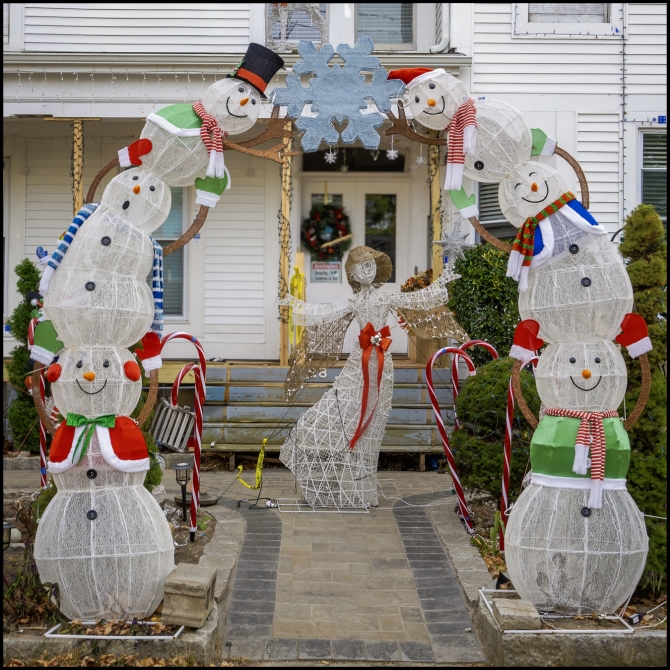These three statues stand outside a church, the name of which I’m having trouble with. The header on the church’s website refers to: “St. John Paul II Maronite Catholic Church at Immaculate Conception”. Other parts of the site refer only to “The Church of the Immaculate Conception”.
There’s section on The History of the Maronites, part of which reads:
The Maronite Church dates back to the early Christians of Antioch where “they were called Christians for the first time” (Acts 11:26). She still uses as her liturgical language, Syriac, a dialect of the Aramaic that Jesus Himself spoke, and takes her name from the hermit-priest, Saint Maron, who died in 410 AD. Within a few years after Saint Maron’s death, over 800 monks adopted his way of life and became known as the Maronites. Later, the Muslim invasions (7th-10th Centuries), coupled with conflicts from within the Byzantine Empire, caused the Maronites to flee the plains of Syria and their churches and monasteries, to the natural protection of the mountains of Lebanon where they first lived in caves and grottos, and then later built small churches and monasteries. By 687, Maronites organized themselves around Saint John Maron, whom they elected Patriarch of the vacant See of Antioch and thus developed as a distinct Church within the Catholic Church.
. To read more about the history of the Maronite church see here.
There’s also a section on what the site refers to as the Westchester Mission, which I take to mean the history of this particular church rather than this much longer history of the Maronite Church in general. This section reads:
The Westchester Maronite Catholic Mission (WMCM), as it was originally known, was founded by several Westchester families. The idea of a Maronite Church in Westchester began in 2002. First mass took place at the Trinity Church in Mamaroneck NY in April 2002. Bishop Gregory Mansour officially created the Westchester Maronite Catholic Mission in June 2006. Regular masses started once a month, then starting in 2007 twice a month. September 2007, Mission home moves to the Sisters of Divine Compassion – Good Counsel Campus on 55 North Broadway, White Plains NY. In July 2011, the mission is named after Saint John Paul II.
Through the commitment of its parish members, the Westchester Maronite Catholic Mission’s home was established at the Immaculate Conception Church at 199 North Broadway, Sleepy Hollow NY in April 2013. In August 2014, the Mission acquires the Immaculate Conception Church from the Archdiocese of New York and becomes the Saint John Paul II Parish at the Immaculate Conception.
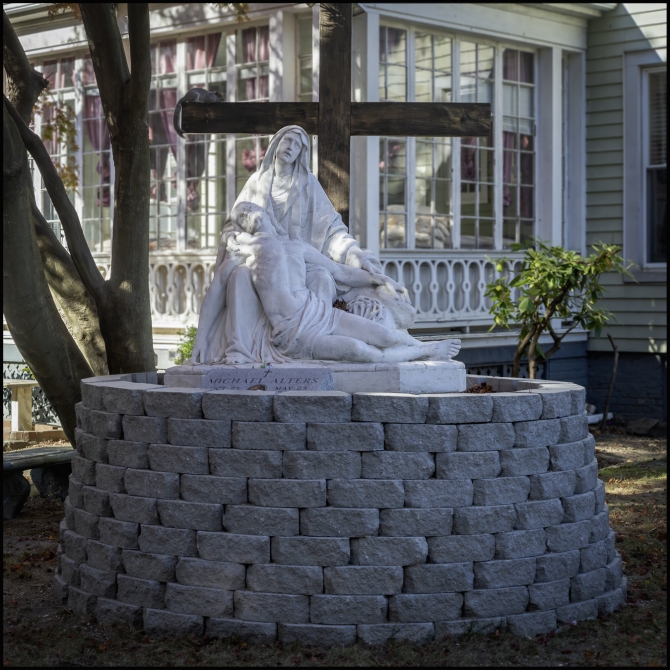
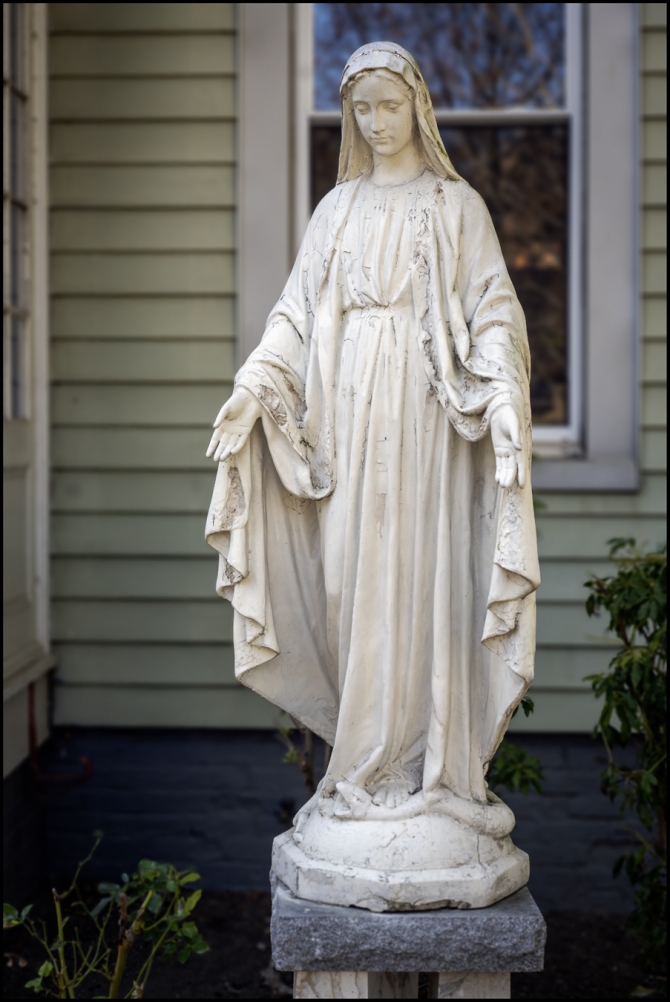
There’s also an interesting section, featuring a few black and white pictures on the art and design of the church which reads:
It is believed that our Church was designed by James Renwick, Jr. (1818–1895, Architect Columbia College 1836, M.A. 1839), who also designed the Smithsonian “Castle” in Washington and St. Patrick’s Cathedral in New York among many other landmarks in New York City and Westchester area.
A leader of multiple architectural movements in the 19th-century United States, James Renwick, Jr., elevated contemporary regard for the profession through his designs for high-profile buildings such as the Smithsonian “Castle” in Washington and St. Patrick’s Cathedral in New York. Renwick’s great success was especially noteworthy given that he was, in a sense, a hobbyist: He had no formal architectural training and did not need to work to support himself, but rose to the top of his field on the strength of his engineering background, historical knowledge, and refined sensibilities. Renwick was 25 when he won his first commission, in 1843, to build New York’s Grace Episcopal Church (Broadway and 10th Street); the popular design brought him instant renown and is an early marker of the Gothic revival period. He used a related style when designing St. Patrick’s, the largest Catholic cathedral in the United States. Begun in 1858 and completed 21 years later, the cathedral was modeled on a German forebear but incorporated French and English elements as well. Responsive to both changing tastes and the desires of his patrons, Renwick also worked in the Romanesque, as exemplified by the red-sandstone Smithsonian Institution building (1855), and in later years helped introduce the Second Empire style to America, as at Washington’s original Corcoran (now Renwick) Gallery (1871). For several years the supervising architect for New York’s Commission of Charities and Correction, Renwick designed public buildings on Roosevelt, Randall’s, and Ward’s islands. He also designed the original Main Building (1865) on the Vassar College campus in Poughkeepsie, N.Y. A house built for his parents at 21 5th Avenue—the first on its 9th Street block—was later occupied for a time by Mark Twain.
The church’s home page can be found at: https://www.johnpaul2parish.org/
Taken with a Sony A7IV and Nikon Micro Nikkor 55mm f3.5

